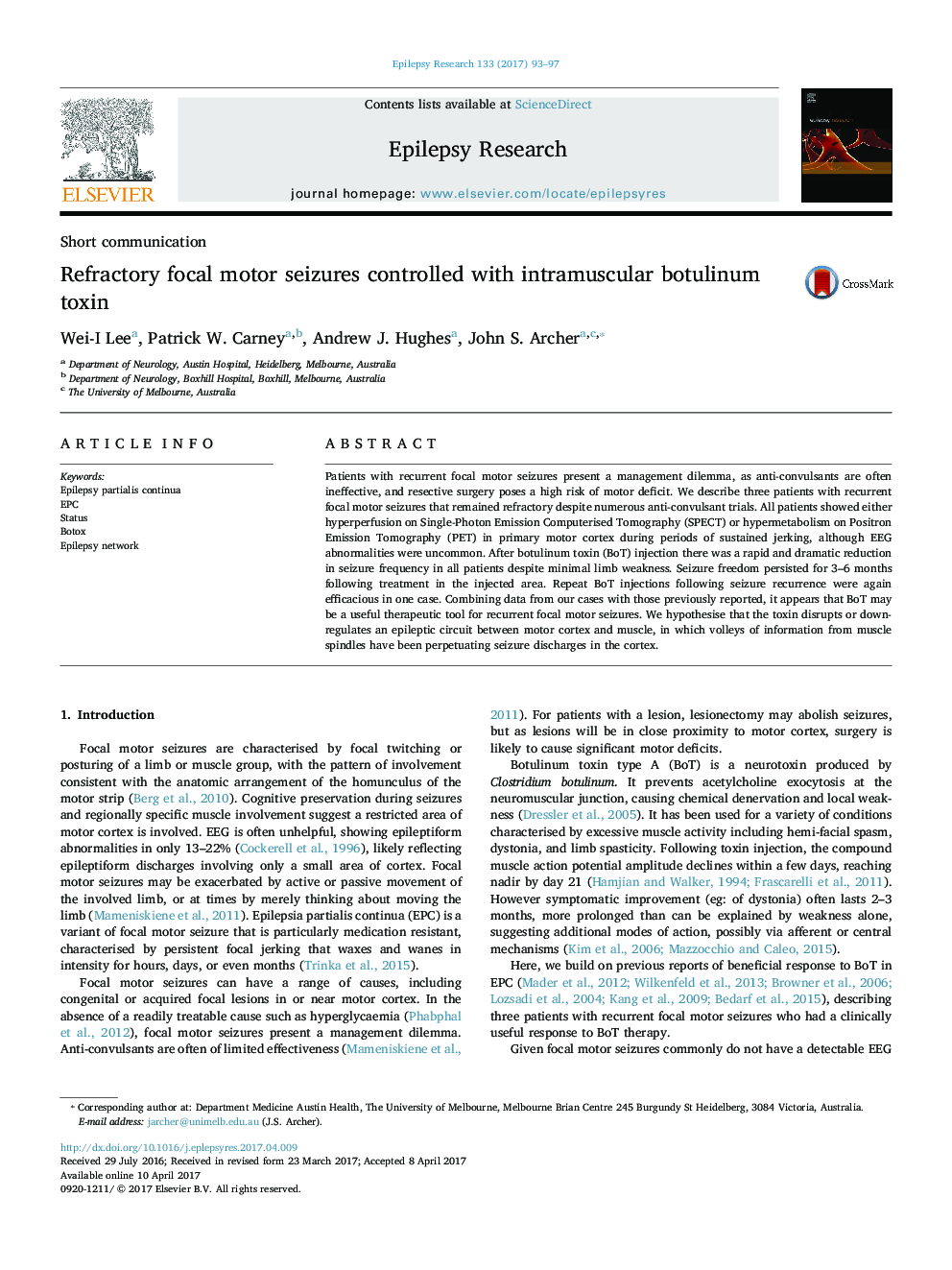| Article ID | Journal | Published Year | Pages | File Type |
|---|---|---|---|---|
| 5628595 | Epilepsy Research | 2017 | 5 Pages |
â¢Focal motor seizures / Epilepsy partialis continua can be hard to treat.â¢We describe three patients with seizure suppression following intramuscular botulinum toxin (BoT).â¢BoT appears to disrupt an epileptic circuit between motor cortex and muscle.â¢Volleys of information from muscle spindles may be perpetuating seizure discharges in the cortex in these patients.
Patients with recurrent focal motor seizures present a management dilemma, as anti-convulsants are often ineffective, and resective surgery poses a high risk of motor deficit. We describe three patients with recurrent focal motor seizures that remained refractory despite numerous anti-convulsant trials. All patients showed either hyperperfusion on Single-Photon Emission Computerised Tomography (SPECT) or hypermetabolism on Positron Emission Tomography (PET) in primary motor cortex during periods of sustained jerking, although EEG abnormalities were uncommon. After botulinum toxin (BoT) injection there was a rapid and dramatic reduction in seizure frequency in all patients despite minimal limb weakness. Seizure freedom persisted for 3-6 months following treatment in the injected area. Repeat BoT injections following seizure recurrence were again efficacious in one case. Combining data from our cases with those previously reported, it appears that BoT may be a useful therapeutic tool for recurrent focal motor seizures. We hypothesise that the toxin disrupts or down-regulates an epileptic circuit between motor cortex and muscle, in which volleys of information from muscle spindles have been perpetuating seizure discharges in the cortex.
